Page Table of Contents
About the Author
Hot Topics
Updated on Jul 26, 2024
| ⌛Duration | 30-45 minutes |
| 🧑🏻💻Suitable Users | All levels of users |
| 🎯Goal | Migrate Windows 10 to SSD, switch Windows 10 to SSD without boot issue |
| 💻Also Applies to | Migrate Windows 11/8.1/8/7 and Windows XP/Vista to SSD |
| 🛠️What Do You Need | New SSD, screwdriver, OS migration software, SATA-to-USB adapter (if needed) |
| 🪜Steps |
Migrating Windows 10 to an SSD greatly boosts performance, leading to faster data access and software launches. Additionally, SSDs are more dependable because they have no moving parts, which enhances their durability and ensures better data integrity.
So, how do I migrate my Windows 10 to a new SSD? This page from EaseUS covers everything you need to know about OS migration. Here, we'll take Windows 10 as an example to show you how to migrate Windows 10 to SSD via a powerful OS migration tool successfully. Let's get started.
Precautions
Here's a brief overview of the precautions you need to pay attention to before migrating Windows 10 to an SSD:
- Back Up Data: Always back up important files to prevent data loss.
- Verify Compatibility: Ensure the SSD is compatible with your computer's interface and form factor.
- Check Capacity: The storage capacity of your new SSD shall be equal to or larger than the used space of the Windows 10 system C drive.
- Update Drivers: Keep your system updated with the latest drivers and software.
- Stable Power Supply: Ensure your device is plugged in to avoid interruptions during migration.
#1. Set Up SSD for Migrating Windows 10
The first step is to set up the new SSD for your PC. Make sure that you install the SSD correctly to your Windows 10 computer before starting with the next configuration steps here:
Step 1. Shut down the PC and install a new SSD to Windows 10.
- For SATA SSD: Connect it to your computer motherboard via the SATA and Data connection cable.
- For NVMe or M.2 SSD: Inset it to the SSD slot and fasten the screws.
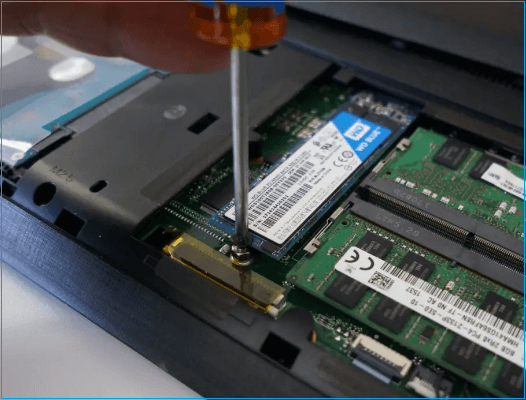
Step 2. Configure and initialize SSD to the same disk partition style as the current OS drive.
- Open Disk Management, right-click on the current OS disk, and select 'Properties'.
- Confirm and view its disk partition style in the volume section, MBR or GPT.
- Right-click on the SSD unallocated space, and select 'Initialize Disk', set SSD to the same disk partition style as the old drive: MBR - MBR; GPT-GPT.

#2. Download Windows 10 Migration Software
- 🔢Complexity: Easy
- 🧑🏻💻Supported OS: Windows 11/10/8.1/8/7, etc.
- 🏅Benefits & Pros: For all levels of users, easy to operate, no data loss, no system reinstallation.
- 🎯Applies to: Migrate and transfer OS from HDD to SSD, HDD, hybrid-HDD/SSD.
Note that migrating Windows OS to a new disk requires you to turn to reliable OS migration software for help, as Windows 10 itself doesn't contain a system migration feature.
EaseUS Partition Master, with its Migrate OS feature, can fulfill your need to transfer and move the entire OS to a new SSD in simple clicks. It simplifies the complex procedure in only a few clicks, and all levels of Windows users can apply this tool for help. You can directly download and install this software on your PC and then move to the next step.
#3. Guide to Migrate Windows 10 to SSD
Once your SSD is set up and ready for OS migration in Windows 10, you can now follow the steps here to migrate the OS to SSD with the help of reliable OS migration software - EaseUS Partition Master.
1. Launch EaseUS Partition Master, go to the Clone section, click "Migrate OS" and click "Next" to continue.
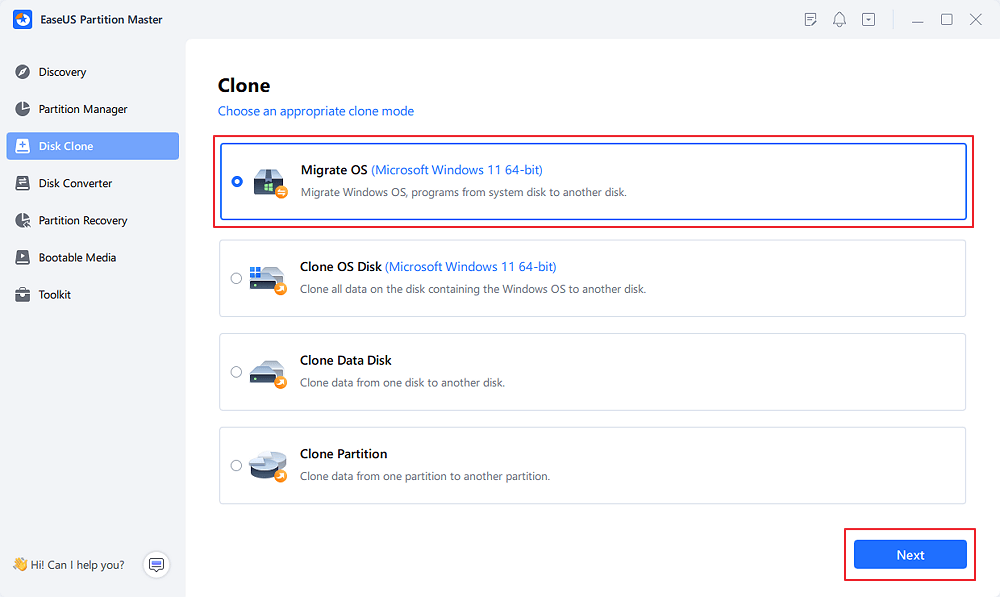
2. Select the target SSD you want to migrate Windows OS to, and click "Next".
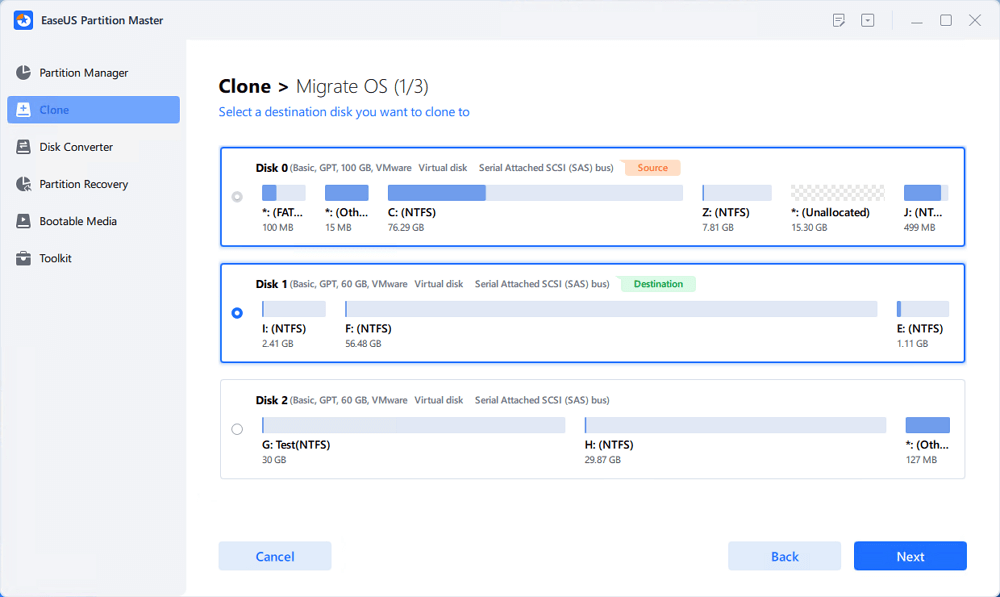
3. Click "Yes" to confirm the you want to exceute the operation.
4. Click "Start" to start migrating your OS to the new SSD.
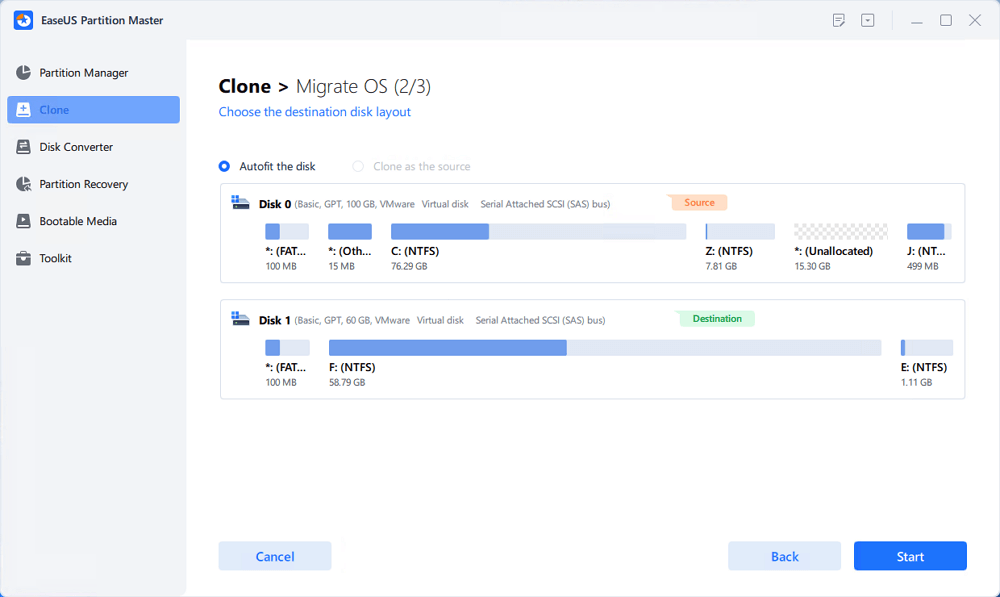
5. When the process completes, you'll see a confirming message, asking "if you want to start up computer from the clone target disk".
Tick "Adjust the order to boot from the clone target disk" and click the respective button through your demands.
- Reboot Now means to reboot your PC and configure the computer to boot OS from the new disk immediately.
- Done means you want to make the changes later.
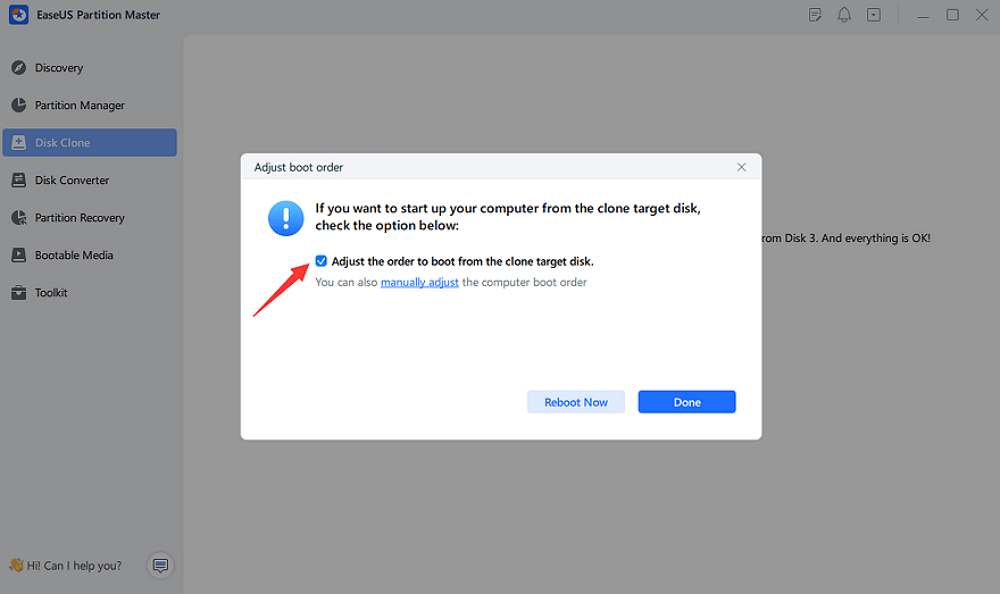
If this tutorial guide did work, and you've switched the OS disk to SSD, feel free to share this page to help more of your friends online.
#4. Set Windows 10 to Boot from SSD
If you decide to manually change the boot drive in BIOS, this section can help. As you switched the OS to SSD, you'll need to set up the new SSD with OS as the boot drive instead of the old disk in BIOS settings.
Here are the detailed steps that you can follow:
Step 1. Shut down and reboot your computer, and press F2/F8/F11 or Del key to enter the BIOS settings.
Step 2. Go to the Boot menu and set the new SSD with migrated Windows 10 as the boot drive in the Boot Priority section.
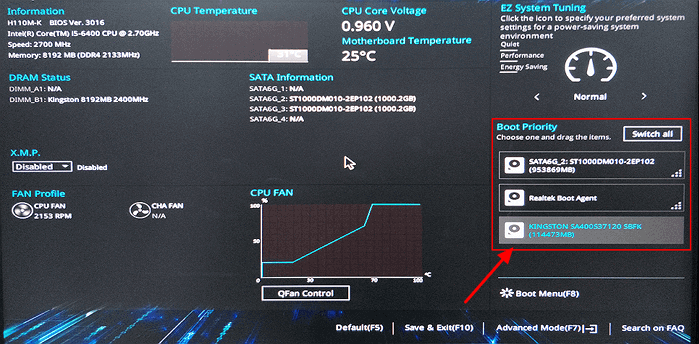
Step 3. Press F10 or save the changes, and exit BIOS. Then reboot the PC.
Wait patiently to let the computer boot up. You can then log in with your password and start computing like on the new SSD. After this, you should be able to run Windows 10 on the new SSD and enjoy a faster computing life.
Below are some common issues reported by other users. You can check the corresponding page if it happens to your PC.
Bonus Tip: What to Do with the Old OS Drive after Migrating OS to SSD on Windows 10
Some of you may have the same question here: What do I do with the OS drive? How do I deal with the old system disk, or what do I do with the old operating system OS disk after I migrate my OS to the new SSD?
Here is a list of tips that you can follow to learn how to make use of an old disk on your computer:
#1. Reset the Old OS Drive as a Data Disk
If you simply want to use the old OS drive as a second data drive on your computer to separate data and OS, you can directly format the old OS partition to quickly clean the partitions for saving new content.
EaseUS Partition Master, with its Format feature, can help.
Step 1. Right-click the hard drive partition and choose the "Format" option.
Step 2. In the new window, set the Partition label, File system, and Cluster size for the partition, then click "OK".
Step 3. You can see a warning window, click "Yes" to continue.
Step 4. Click the "Execute 1 Task(s)" button, then click "Apply" to start formatting the hard drive partition.
#2. Wipe Old OS Disk and Cleanup Data Completely for Sell
If you want to sell the old OS drive, you can turn to reliable hard disk wipe software to completely erase everything on the drive. Then, you can sell it online.
EaseUS Partition Master also offers a disk wipe feature that you can apply to reset the old drive as fresh as new with the steps here:
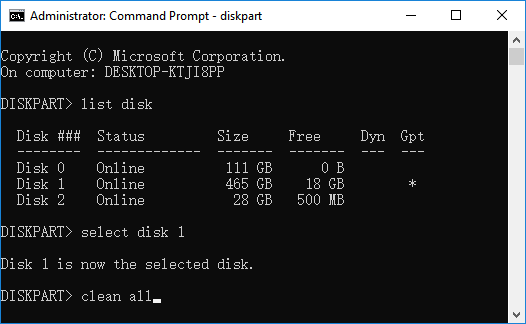
How Do I Securely Erase Hard Drive/SSD, Wipe Confidential Data?
When you replaced the computer hard drive with a newer SSD or a bigger hard drive, what will you do with the old disks? Directly giving it away or sell it? Wait a minute! You still have one step to do here...Read more >>
The Benefits of Migrating Windows 10 to SSD
As SSD is getting more and more popular in the digital world, many users decided to upgrade their HDD to SSD for a better experience, especially players. So why do I need to migrate Windows 10 to an SSD? Or, in what situations will I need to upgrade and migrate the Windows 10 OS to a new SSD?
Here is a list of situations, and if you are experiencing any one of them, you'll need to migrate the OS to SSD:
- Enhanced Performance: SSDs provide significantly quicker read and write speeds compared to traditional hard drives (HDDs), resulting in faster access to files and applications.
- Reduced Boot Times: Systems equipped with SSDs can boot up in seconds, allowing users to start working or gaming almost immediately after powering on their devices.
- Improved Reliability: SSDs are built without mechanical components, which makes them less prone to physical damage and failure and thus helps protect your data from loss.
- Increased System Responsiveness: The enhanced speed of SSDs allows for seamless multitasking, making it easier to run multiple applications simultaneously without lag or issues like Windows 10 file transfer stuck at 99%.
- Lower Power Consumption: SSDs typically consume less power than HDDs, which can lead to longer battery life in laptops and reduced energy costs for desktops.
Conclusion
Migrating Windows 10 OS to an SSD disk is complex yet possible with the correct methods and tutorials. This page presents you with a list of reasons and situations that explain why and when you need to upgrade the Windows 10 OS disk to an SSD disk. To do so, you need to obtain reliable OS migration software - EaseUS Partition Master and set up SSD ready. Then, accomplish the steps mentioned in #3 and you should be able to enjoy Windows 10 on your new SSD.
FAQs About Migrate OS to SSD in Windows 10
Here, we also collected some hot topics about OS migration in Windows 10. If you feel interested, continue reading and finding desired answers here:
1. What are the benefits of migrating Windows 10 to SSD?
- Improve computer performance and minimize the bootup and shutdown duration.
- Improve computer reading and writing speed.
- Speed up file transferring speed.
- Improve gaming experience.
- Create more space to save data on the second disk.
- Isolate OS with data, making data management more intelligent.
2. What is the best migrate Windows 10 SSD software?
Here is a list of OS migration software that worldwide users and professionals highly praise for migrating the operating system:
- EaseUS Partition Master
- Samsung Data Migration
- Paragon Drive Copy
- Clonezilla
3. Can I transfer my Windows 10 to a new SSD?
Yes, you can migrate Windows 10 to SSD using reliable OS cloning software.
- Connect the new SSD to your Windows 10 computer.
- Download Windows OS migrating software like EaseUS Partition Master.
- Migrate Windows 10 OS to new SSD with the OS migrating tool.
- Boot your computer from the new SSD.
For a step-by-step guide, follow this page to learn the details: Clone Windows to SSD for Free.
4. Can I clone Windows 10 to SSD without software?
No, Windows doesn't have a cloning tool for cloning the operating system to a new disk. Though Windows 10 supports creating a system image and restoring to a new SSD, the procedure is not a cloning process.
Also, it's a complex and time-consuming task for Windows beginners. So, we suggest you use a reliable and trustworthy third-party disk cloning software to accomplish this task.
How Can We Help You
About the Author
Oliver is an EaseUS professional writer who dares explore new areas. With a passion for solving tech issues with straightforward guides for common users, Oliver keeps honing his writing craft by developing in-depth solutions for disk and partition management, computer boot-up issues, file transfer, etc.
Written by Tracy King
Tracy became a member of the EaseUS content team in 2013. Being a technical writer for over 10 years, she is enthusiastic about sharing tips to assist readers in resolving complex issues in disk management, file transfer, PC & Mac performance optimization, etc., like an expert.
Product Reviews
-
I love that the changes you make with EaseUS Partition Master Free aren't immediately applied to the disks. It makes it way easier to play out what will happen after you've made all the changes. I also think the overall look and feel of EaseUS Partition Master Free makes whatever you're doing with your computer's partitions easy.
Read More -
Partition Master Free can Resize, Move, Merge, Migrate, and Copy disks or partitions; convert to local, change label, defragment, check and explore partition; and much more. A premium upgrade adds free tech support and the ability to resize dynamic volumes.
Read More -
It won't hot image your drives or align them, but since it's coupled with a partition manager, it allows you do perform many tasks at once, instead of just cloning drives. You can move partitions around, resize them, defragment, and more, along with the other tools you'd expect from a cloning tool.
Read More
Related Articles
-
Surface Boot Loop: 100% Working Solutions 🔥
![author icon]() Sherly/2024/06/17
Sherly/2024/06/17 -
How to Format Corrupted SD Card [Hard Format SD Card]
![author icon]() Tracy King/2024/04/22
Tracy King/2024/04/22 -
How to Remove USB Partition on Windows 10/11
![author icon]() Tracy King/2024/05/16
Tracy King/2024/05/16 -
How to Fix "No Audio Output Device is Installed" Windows 11
![author icon]() Daisy/2024/07/08
Daisy/2024/07/08
Hot Topics in 2024
EaseUS Partition Master

Manage partitions and optimize disks efficiently








